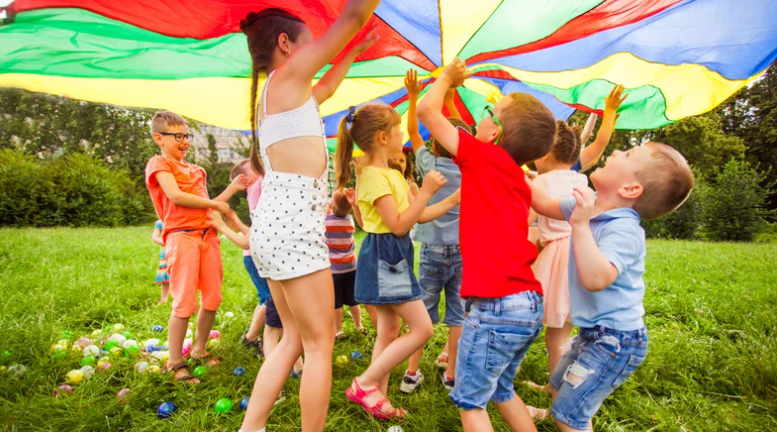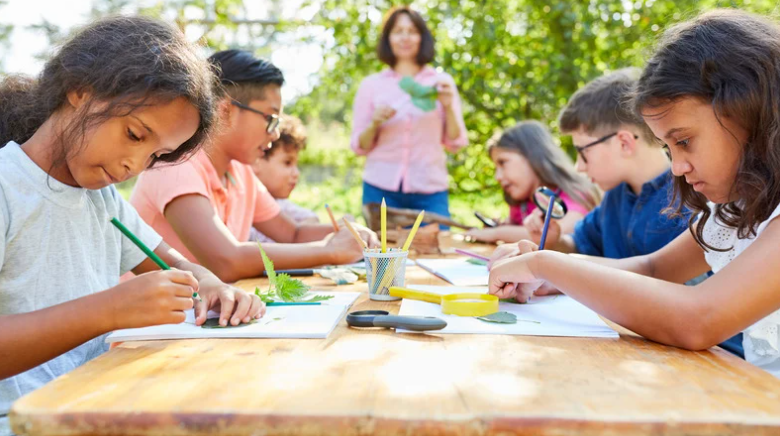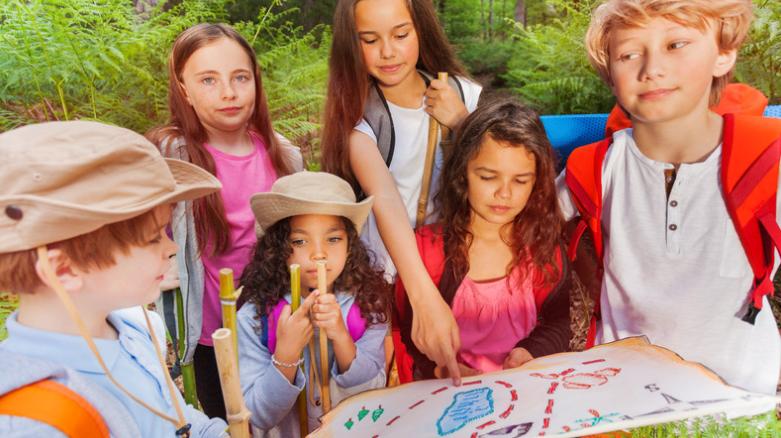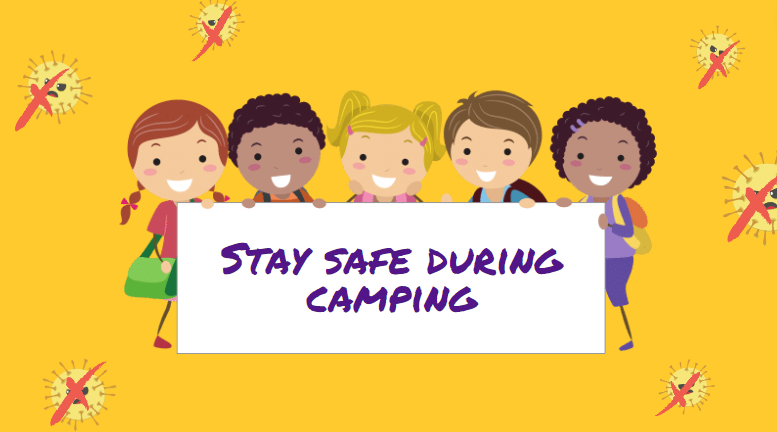
Camping with kids opens up a world of joyous discovery and invaluable educational experiences, blending adventure with nature’s classroom. Engaging activities are the heart of any memorable camping trip, enhancing the experience by sparking curiosity, fostering creativity, and encouraging physical activity. By thoughtfully incorporating a variety of fun and educational pursuits, we enrich our children’s camping adventures and instill a lasting appreciation for the great outdoors and its many wonders.
Preparation Tips Before Camping
Getting ready for a camping trip is half the fun! Let’s pack the right mix of games and gear and get our little campers excited early with some pre-camping activities.
Packing the Essentials:
- Bring a frisbee, ball, and jump ropes for endless outdoor fun.
- Don’t forget safety gear like helmets for biking and sunscreen to protect from the sun.
- Pack a first aid kit because it’s always better to be prepared.
Early Introductions to Camping Themes and Activities at Home:
- Read books about camping to spark interest.
- Have a mini “campout” in the living room or backyard.
- Explore local parks to practice observing nature.
Camping Activity Categories
Ready for adventure? From exploring nature, getting creative, and staying active to having fun under the stars and learning games, we’ve got all the bases covered for the ultimate camping trip!
Nature Exploration
Embarking on nature exploration facilitates a deeper connection with our environment and fosters an appreciation for the intricate ecosystems around us.
- Scavenger Hunt: Tailor scavenger hunts to suit various habitats by crafting customized lists. Engage participants with the surrounding biodiversity as they seek out designated natural items or phenomena.
- Bird Watching: Equip yourself with binoculars and a field guide to identify avian species. Pay attention to bird calls, feather patterns, and behavior to distinguish between common local birds.
- Nature Walks: Participate in nature walks led by experienced guides. Focus on the rich tapestry of plant and animal life along the trail while learning about each species’ ecological roles.
- Fishing Basics: Teach fishing fundamentals suitable for all ages, emphasizing ethical practices and safety. Provide instruction on casting techniques, bait selection, and fish handling, ensuring a responsible approach to the activity.
Creative Arts

The Creative Arts segment is devoted to unlocking each participant’s imaginative potential by integrating the beauty and diversity of the natural world into various forms of artistic expression.
- Nature Crafts: Engage with the environment by collecting found objects such as leaves, twigs, and stones to create unique art projects. This encourages creativity while promoting a deeper connection with nature.
- Rock Painting: Foster a sense of community and artistic expression by painting rocks with vibrant designs. Once painted, these rocks can be hidden around the campsite for others to find, blending art with an interactive hide-and-seek game.
- Leaf Rubbings: Introduce the simple yet profound technique of leaf rubbings. Place a leaf under a sheet of paper and gently rub a crayon over the surface to reveal the intricate details of the leaf, creating a beautiful piece of art.
Physical Activities
Physical activities in the great outdoors are essential for developing physical fitness and enhancing motor skills. They offer participants exciting challenges that promote health and teamwork in a natural setting.
- Obstacle Courses: Construct simple obstacle courses using natural materials such as logs, rocks, and branches. Design setups that encourage climbing, jumping, and balancing to engage different muscle groups and coordination skills.
- Canoeing/Rafting Basics: Introduce the fundamentals of canoeing and rafting, focusing on water safety. Teach basic paddling techniques and the importance of always wearing life jackets to ensure a safe and enjoyable experience on the water.
- Hide and Seek: Adapt the classic hide-and-seek game for large outdoor areas. Implement variations such as team play or boundary limits to keep the game exciting and suitable for diverse outdoor environments, enhancing spatial awareness and strategic thinking.
Evening Fun
Evening activities provide a perfect opportunity to unwind and connect, transforming nightfall into a time of enchantment and camaraderie amid the tranquil beauty of nature.
- Campfire Stories: Master the art of storytelling with engaging campfire tales that captivate and thrill. Use expressive voices and dramatic pauses to bring stories to life, selecting popular tales that resonate with all ages for an unforgettable experience.
- Star Gazing: Navigate the night sky with star maps, identify constellations, and learn their stories. This activity not only educates but also fosters a sense of wonder as participants explore the universe’s vast beauty.
- S’mores Night: Elevate the traditional s’mores experience by teaching safe and fun ways to roast marshmallows over a campfire or portable stove. Emphasize the importance of safety while encouraging creativity in assembling their s’mores for a sweet end to the day.
Educational Games

Educational games are an essential bridge between learning and play, empowering participants with practical skills and knowledge through engaging and interactive experiences that stimulate both mind and body.
- Map Reading Skills: Incorporate basic map reading techniques into fun, challenging games to enhance navigational prowess. These activities teach essential survival skills and encourage strategic thinking and spatial awareness.
- Wildlife Safety Education: Utilize games to teach about local wildlife, focusing on recognition, respect, and safety practices. This fosters a harmonious relationship with nature, emphasizing the importance of coexistence and awareness.
- Weather Watching: Introduce games that involve observing and predicting weather conditions. This activity helps participants understand weather patterns and the importance of preparation. It encourages curiosity and respect for nature’s power, enhancing outdoor safety awareness.
Additional Fun Activities
Diversify the outdoor experience with a variety of fun and enriching activities that stimulate creativity, promote physical health, and encourage detailed observation and documentation of nature’s wonders.
- Photography Challenges: Set up photography challenges with specific prompts to foster an appreciation for nature and enhance observation skills. Encourage participants to capture unique perspectives and details of their surroundings, nurturing their creativity and technical skills.
- Outdoor Yoga: Introduce simple yoga poses suitable for children, focusing on balance, flexibility, and calmness. Practicing yoga outdoors enhances the connection with nature, provides relaxation, and promotes physical well-being.
- Treasure Hunts: Design engaging treasure hunts with clues that encourage exploration and problem-solving. Set up clues integrating learning about the natural environment, teamwork, and observational skills to make the adventure educational and exciting.
- Camping Journaling: Encourage children to document their camping experiences through journaling. Provide them with notebooks and suggest they record observations, drawings, and personal reflections. This bolsters writing skills and serves as a valuable keepsake from their adventure.
Safety Tips

General safety advice for activities:
- Always supervise children closely in all outdoor activities to ensure their safety and prevent accidents.
- Dress children appropriately for the weather, with layers for cold conditions and light, breathable fabrics for warmth.
- Teach children to stay within designated areas for each activity to avoid getting lost or wandering into unsafe zones.
- Equip children with safety gear, such as helmets, knee pads, or life jackets, when they participate in activities like biking, skating, or water sports.
- Familiarize everyone with the location’s specific safety guidelines and emergency procedures at the beginning of the trip.
Quick first aid tips and how to prepare for emergencies:
- Pack a comprehensive first aid kit tailored to the camping environment, including items for cuts, insect bites, and allergic reactions.
- Conduct an introductory first aid session with kids before the trip, teaching them about bandaging, recognizing allergic reactions, and when to seek an adult’s help.
- Identify and communicate the nearest medical facility before embarking on camping trips, ensuring quick access in emergencies.
- Establish a buddy system among the children to look out for each other, especially during activities that require moving away from the campsite.
- Instruct children to use whistles or personal alarms in case they become lost or feel in danger, emphasizing the importance of staying put and making noise to be found.
Final Thoughts
Throughout this article, we’ve explored a variety of engaging and educational camping activities designed for kids, ranging from outdoor adventures and nature crafts to safety tips and survival skills. Our goal was to provide a balanced mix of fun, learning, and safety, ensuring that your next camping trip is memorable and enriching for your little ones.
We hope this article inspires you with valuable ideas to engage your child in the great outdoors. When finding a trustworthy daycare for your precious one in New York, consider Baby Steps Daycare. With years of experience, we pride ourselves on our compassionate and skilled teachers adept at fostering a nurturing and stimulating environment for your children. We invite you to visit us or give us a call to learn more about how we can support your family’s childcare needs.

